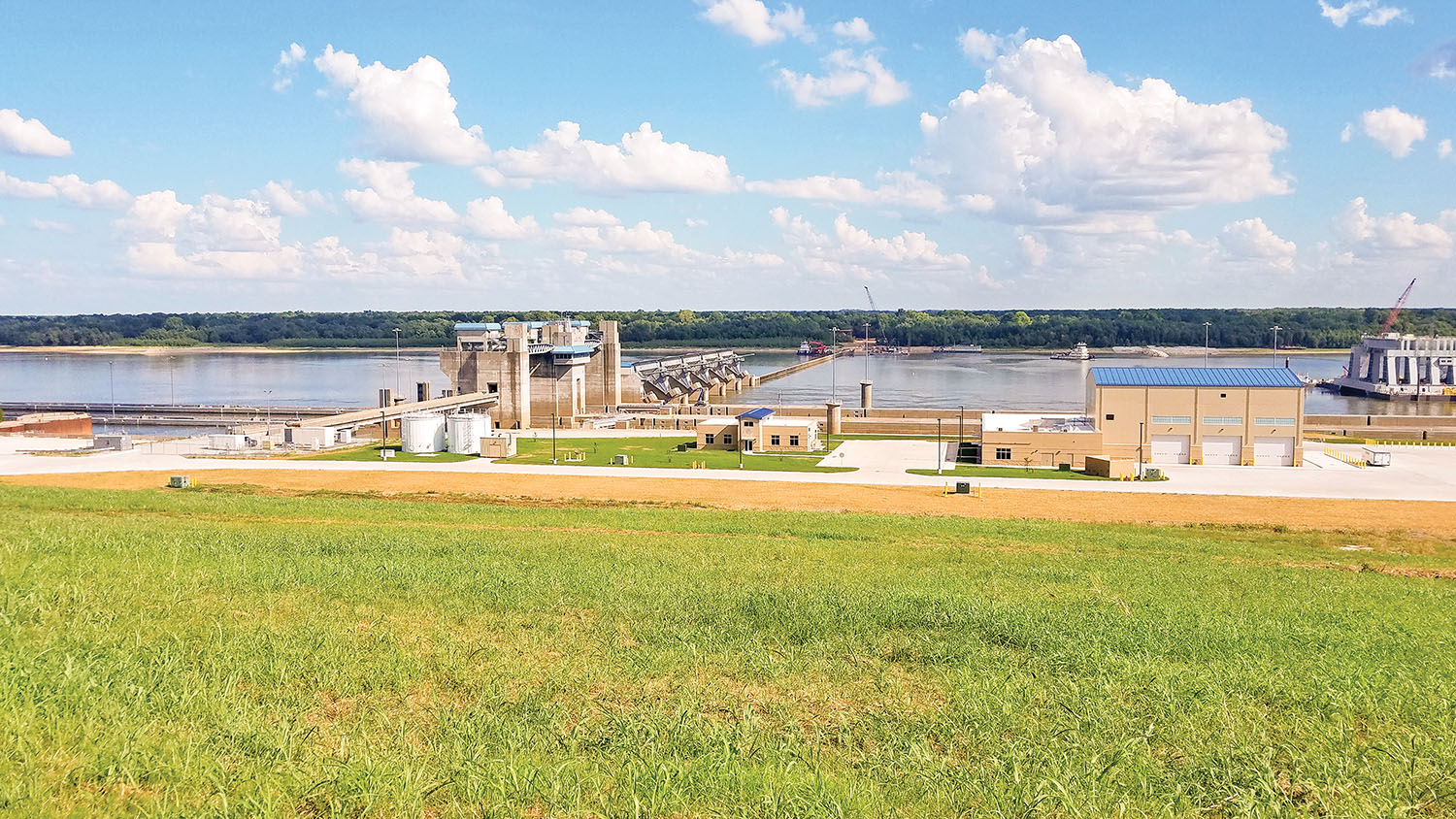The Olmsted Locks and Dam project has received a national award as one of the American Society of Civil Engineers’ top 10 outstanding engineering projects.
Officials representing the Louisville Engineer District were on hand to receive the Outstanding Civil Engineering Achievement Honor Award on March 13 in Washington, D.C., during a gala ceremony.

Olmsted Locks and Dam Project Manager Dewey Rissler described the award as the engineering equivalent of the Academy of Motion Arts and Pictures’ Academy awards.
“The award ceremony is like the Oscars for civil engineers,” he said. “To be nominated, to be put in a pool with the other folks there, is just an honor in itself.”
The Corps learned about the award after the American Society of Civil Engineers contacted the district to write an article about the Olmsted project.
“I thought that was going to be the end of it,” Rissler said. “Then I get a letter that says, ‘Hey we looked at your project and have selected it as one of the top 10 outstanding engineering projects.”
As stated by the Corps, the $3 billion Olmsted project was a critical piece of infrastructure in keeping America’s water highway moving by eliminating bottlenecks at two antiquated locks. Located at Ohio River Mile 965 near the town of Olmsted, Ill., the project is in what is called the hub of the inland waterways system and project provides a connection to the Mississippi, Tennessee and Cumberland rivers.
“More tonnage moves through the area than any other place in America’s inland navigation system, making Olmsted one of the most vital infrastructure projects in our nation’s history,” the Corps said in describing the project.
Annually, 90 million tons of commodities transit the section of the lower Ohio, bringing an economic benefit estimated at $640 million.
The Corps also noted that the project was the Corps’ largest civil works project since the construction of the Panama Canal. It consists of two 110- by 1,200-foot locks adjacent to the Illinois bank and a dam composed of five tainter gates, a 1,400-foot wicket dam and a fixed weir. Construction required more than 15,000 dives by trained divers.
Completion of the project required nearly 30 years of work, including 45 million labor hours.
Aspects of the project that stood out to the American Society of Civil Engineers included the innovation of in-the-wet construction, the planning and delivery of the project and overcoming some of the challenges faced in constructing it, he said.
“That area of the river is the hub of the inland waterways system, so we had to look at some method that would maintain passage through the area, and really the only way to do that while minimizing the impact to the barge industry was the in-the-wet construction method,” Rissler said. “Nobody had done that before.”
The method required constructing 43 concrete shells, each 4,000 to 4,500 tons, that had to be cast on shore and then floated into place within 3/8- to 1/2-inch tolerance using divers. They were slipped into place almost 40 feet down in murky water Rissler said resembled chocolate milk. Then they were filled with concrete, locking them permanently to their steel piling foundations.
The Olmsted Locks and Dam became fully operational and had its ribbon-cutting ceremony in August 2018, although construction workers were unable to finish the final punch-list items on the project until November 2019 because of high water. The Corps continues working to demolish the obsolete former Locks and Dams 52 and 53, which the Olmsted project replaces, as well as to restore the construction site back to its natural, pre-construction state.
The ASCE pointed out the economic significance of the Olmsted project in its news release about the honor.
“Locks and Dams 52 and 53, built in the 1920s and decades beyond their planned service lives, had been receiving only ‘Band-Aid-type repairs’ recently to extend their operability,” ASCE said. “Even then, the standard 15-barge tow used on the Lower Ohio River often had to be broken into segments or wait as long as 60 hours to pass through a “temporary” lock chamber constructed over 40 years ago to get around the dam.”
Initial phases of the Olmsted Locks and Dam project began in 1993, with construction starting in 2004, meaning some of the engineers involved in the project had been working on it for nearly their entire careers, ASCE noted.
Caption for top photo: The $3 billion Olmsted Locks and Dam became fully operational in August 2018. The Louisville district of the U.S. Army Corps of Engineers recently won a top 10 national award from the American Society of Civil Engineers for the project.



